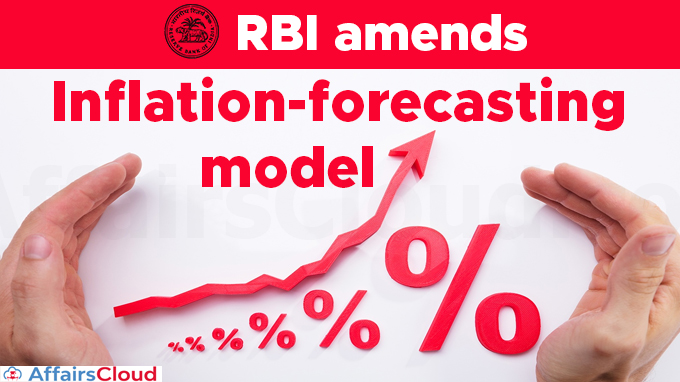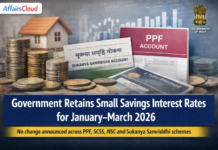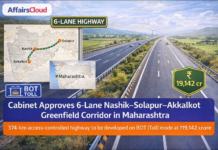 RBI has revised the Quarterly Projection Model (QPM) to enrich the model’s analytics and to capture the interactions between the fiscal and monetary policy with real-economy elements.
RBI has revised the Quarterly Projection Model (QPM) to enrich the model’s analytics and to capture the interactions between the fiscal and monetary policy with real-economy elements.
- The revised model is termed QPM 2.0 and it incorporates, fiscal-monetary dynamics, disaggregated fuel pricing (oil price, exchange rate and fuel taxes), the balance of payments and exchange rate interactions.
Background:
- In 2016 RBI has introduced QPM based on the ‘Forecasting and Policy Analysis System’ to provide support for flexible inflation targeting (FIT) framework/ Inflation Forecast Targeting framework in India
- QPM is structured around a small New-Keynesian open-economy framework.
- The model captures key India-specific features, especially, in terms of inflation dynamics and characteristics of monetary policy transmission.
- It describes the model properties in terms of the responses of key macroeconomic variables to different shocks.
About QPM 2.0
- The new model’s framework was described as a forward-looking, open economy, calibrated, New-Keynesian gap model
- The model consists of 3 blocks such as fiscal block, fuel block and balance of payments block
i.The fiscal block (1st block):
- It decomposes the government’s primary deficit into structural and cyclical components with shocks to the structural component impacting inflation through aggregate demand and country risk premia.
ii.The fuel block (2nd block): It includes India’s complex system of pricing, which includes the items like
- Petrol and diesel – they are priced based on international oil prices, exchange rates, and local taxes,
- Liquefied Petroleum Gas (LPG) and kerosene prices – are determined by market
- Electricity costs – are administered by state governments.
- The cost-push implications are also incorporated in this block.
Note – Cost-push inflation occurs when overall prices increase (inflation) due to increases in the cost of wages and raw materials.
iii.The balance of payments block (3rd block):
- This block incorporates the determinants of current and capital accounts and their interaction with the exchange rate management.
- It also recognizes the costs associated with a sudden increase in volatility of the exchange rate which is induced by the sudden surges or reversals in capital flows.
Analysis of – QPM based response on “key macroeconomic variables to different case of shocks”
Analysis in Fiscal block:
i.Case: Structural fiscal deficit shock
- It will contribute to demand pressures and create a positive output gap. Then the increasing debt could contribute to the depreciation of the currency through elevated country risk premia.
Response:
- The model will necessitate the monetary policy action since the positive output gap and currency depreciation together can lead to higher inflation.
ii.Case: Cyclical fiscal deficit shock
Response: It will have a modest impact on inflation and it is negligible.
Analysis in Fuel block:
Case: An increase in fuel taxes feeds into higher fuel prices and ex-food fuel inflation through the cost-push channel.
Response:
- It recognizes Headline inflation that goes up by 25bps in response to a fuel tax increase of Rs 10 per litre.
- If tax reversals do not happen, inflation will remain higher.
Analysis in Balance of payment block:
Case: Capital outflow shock as 1% of GDP
Response:
- In case if RBI intervenes and Sterilises 70% of these capital outflows, the reserves will deplete by 0.7 percentage points of nominal GDP and the exchange rate will depreciate, along with inflationary pressure.
- In the case of no intervention of RBI, the exchange rate depreciation will be relatively higher.
Recent Related News:
On April 1, 2021, the Government of India has decided to continue the existing inflation-targeting framework which fixed the inflation target (price stability) of 4% with a +/- 2% tolerance band (in the range of 2% – 6%) for the next 5 fiscal years i.e. FY22 to FY26.
About Reserve Bank of India(RBI):
Establishment – 1st April 1935
Headquarters – Mumbai, Maharashtra
Governor – Shaktikanta Das
Deputy Governors – Mahesh Kumar Jain, Michael Debabrata Patra, and M Rajeshwar Rao




